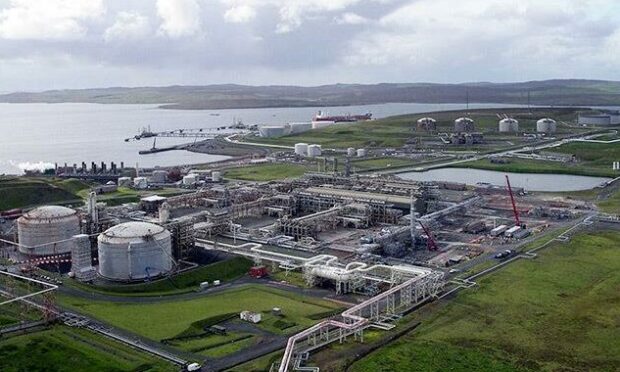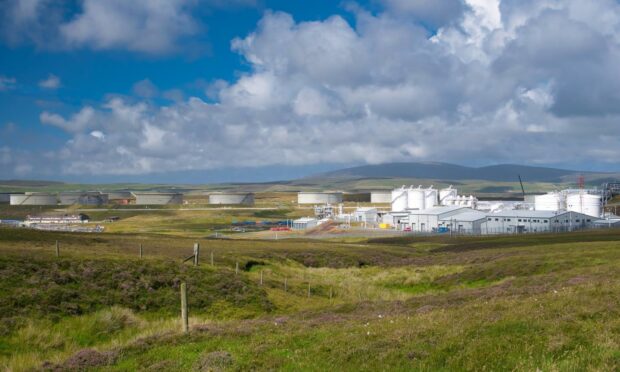Around 50 years since construction started at Sullom Voe, Shetland is at a crucial point in the shift from fossil fuels to a greener future.
Oil transformed the islands’ fortunes in recent decades, peaking with one million barrels a day at the terminal.
But in a new blueprint on the future development of industry in Shetland, island leaders warn: “The end of oil and gas is now in sight, and Shetland needs to prepare.”
Key to the shift is a fair deal for the workforce. High value jobs in a global industry will need to adapt and be replaced.
The council wants to avoid decommissioning all the infrastructure, instead using as much industrial land for onshore and offshore wind power.
In time, the council eyes up mass industrial scale production and export of hydrogen.
Local people wonder why, with all these resources to produce energy well beyond our islands, they don’t see the benefits in their fuel prices.”
Ports of Sullom Voe, Lerwick and Dales Voe, among others, could be the next bases for offshore floating wind and exports of hydrogen fuel.
“Shetland played a central role in Scotland and the UK’s 20th century oil and gas energy revolution,” the new blueprint states.
“We are ready to do the same again.”
As hydrocarbons slow down to 100,000 barrels a day, and the world tries to convert to a climate-friendly future, there are concerns mistakes will be repeated and communities might lose out.
In an interview for The Stooshie, the politics podcast from DC Thomson, Shetland council leader Steven Coutts said UK and Scottish governments have to step up.
He said Shetland’s shocking fuel poverty levels create anger as communities feel they produce the energy but get little in return as bills mount.
Governments are being asked to consider incentives such as free energy for communities.
“That’s one of the opportunities we’d be very keen to explore,” he told us.
Mr Coutts sketched out a map of how Shetland will change.
We need a ‘Shetland Tariff’ to keep local people on board with these plans.”
Transition includes building up the wind and tidal power while winding down oil and gas.
In the future, developments include tidal powered electric car charging stations, hydrogen fuelled ferries and public transport, chemical exports from an “energy hub” and a pipeline to the Scottish mainland.
A £5 million “islands deal” will help but they council wants more help.
In fisheries, the plan involves seaweed cultivation.
And in Unst, the future involves satellite launches to improve global communication.
Industry tariff exemption
The council also wants a heavy industry tariff exemption from the UK Government to make the electrification of new oilfield developments viable. Grants are needed to help the hydrogen ambitions.
A UK Government source insisted they are focused on a “net zero” future with a fair transition for jobs.
Separately, government is investing £90m in a net zero technology centre in Aberdeen. Around £20m a year is dedicated to develop tidal stream energy.
The Scottish Government is being asked to set up an enterprise zone allowing onshore energy improvements.
Mr Coutts welcomed much of the recent signals of intent from Edinburgh but criticised the Scottish Government’s recent transport blueprint.
Ferries need replaced
With half the ferry fleet facing retirement this decade, Shetland needs a huge programme of replacements and in some cases tunnels to “release its potential”.
The Shetland plan concludes with a warning that fortunes will stall if key obstacles are not overcome.
It states: “Local people wonder why, with all these resources to produce energy well beyond our islands, they don’t see the benefits in their fuel prices. It is hard to blame them.
“We need a ‘Shetland Tariff’ to keep local people on board with these plans, which will benefit everyone around the country.”
The plan adds: “If we don’t square this circle, with a Shetland Tariff, then our collective efforts to transition to renewables, and retain and attract a local population, will mean very little.”
Listen to the full interview with Steven Coutts on the latest episode of our politics podcast, The Stooshie.

